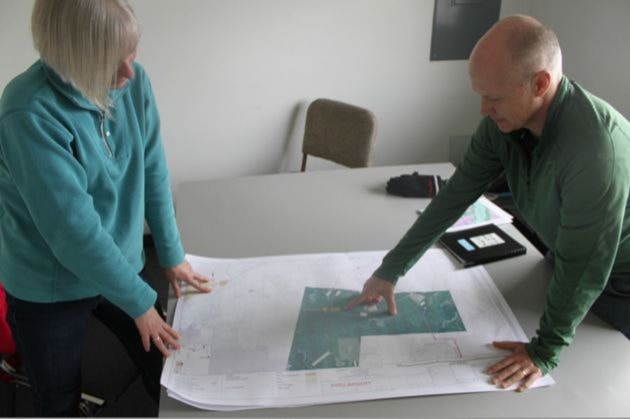How to minimize the impact of crossing the Lakelse River will be a top BC Hydro priority as it proceeds with ecological studies and finalizes design work for a new Terrace to Kitimat power line to replace the decades-old one now in place.
“When you do a project like this, you do have an impact on the environment,” said BC Hydro operations manager Robert Smith during a visit here last week regarding the estimated $115 million project.
“What we have done is chosen the option that appears to have the least impact and what we will do is work within that option to minimize [it].”
The fish-rich Lakelse River, a popular spot for anglers and paddlers, is protected by special provisions that restrict all logging within a two-hundred metre strip on the river edge and limit the amount of permitted logging along an outer strip which is one kilometre on either side.
“There is old growth forest in that area, so the question is, how can we cross that with a transmission line,” said Smith.
“We have to take into account those requirements.”
Smith said BC Hydro hopes there will be no logging necessary if the walls of the river banks are high enough to string right across using elevated towers, and if there is some logging necessary, the goal is to do it using helicopters, or to just cut the tops of the trees to maintain wildlife refuge.
A few weeks ago Smith met with Robert Hart, chair of the Kalum Land and Resource Management Plan, to discuss the delicate traverse of the river. City councillor Michael Prevost was also at the meeting, and brought up the issue at the most recent council meeting.
Council heard that BC Hydro had selected the western side of the valley for the 50 kilometre new power line because it was less environmentally invasive overall, it was cheaper, safer, and because a majority of community and local officials had endorsed that route in public meetings.
The old line, which is nearing the end of its useful life and which currently follows Hwy37 South, will be decommissioned and the right of way left to grow back.
If Kitimat experiences massive industrial growth then putting a second line back in there is an option.
Towers will be higher on the current line and made of steel, capable of transmitting more power despite still being rated at 287 kilovolts like the current one.
The closest the new route will go to the Lakelse Lake is 3.5 km, and Smith said that initial modelling suggests the towers may be visible from the east side of the lake looking west.
“We have a Google Earth model of the line and I lowered the viewpoint right down to the lake and looked across, said Smith.
“I could see tiny bits of the line but mostly it was obscured behind these hummocks, and once you have vegetation in there, which isn’t modeled by Google Earth, you’ll probably find that you can’t see it at all.”
Smith also said that modifications of where the line will run and where the towers are positioned are inevitable as BC Hydro figures out the final route leading to construction in 2016 or 2017 and service within two years.
